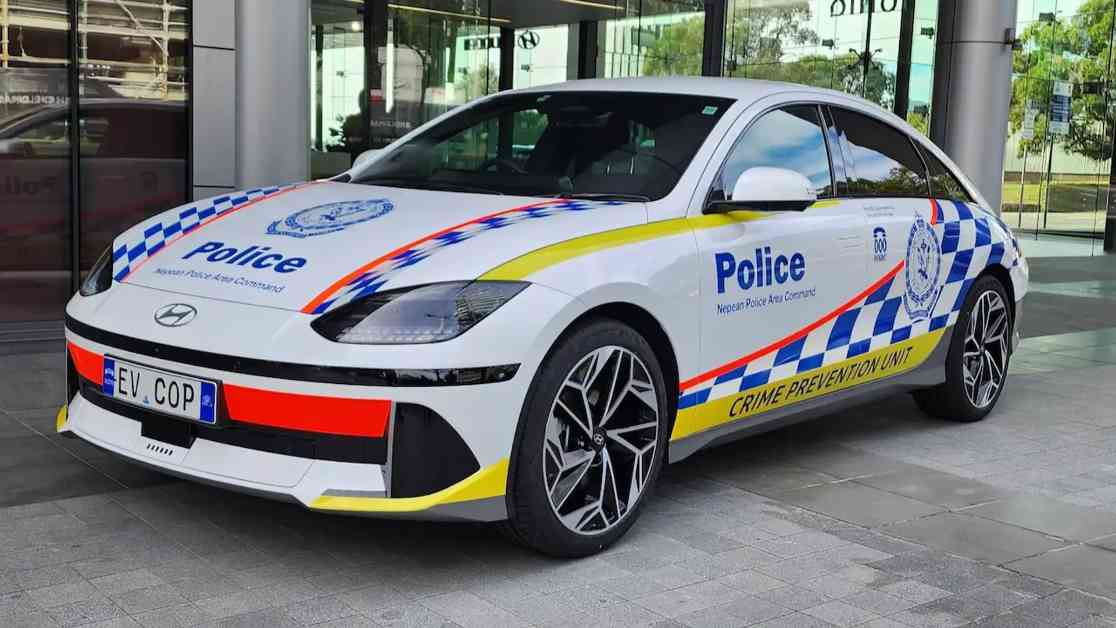Emergency services in our region are embracing the electric vehicle revolution, with police and ambulance departments leading the way. The New South Wales Police has recently welcomed a Hyundai Ioniq 6 electric sedan into its Crime Prevention Unit fleet. This electric vehicle, on loan from Hyundai, will be utilized for community engagement purposes rather than for road patrols and pursuits.
While the exact specifications of the NSW Police Force’s Ioniq 6 remain undisclosed, Hyundai offers this electric model in three variants with different battery options. The vehicle can come with a Standard Range 53kWh model offering 429km of driving range or an Extended Range 77.4kWh version providing 614km of driving range. Additionally, customers can choose between rear- or all-wheel drive configurations.
The police departments across Australia are not the only ones exploring electric vehicles. Queensland Police incorporated a Kia EV6 as a highway patrol car in June 2023, Western Australia Police started using a Hyundai Ioniq 5 in June 2022, and Victoria Police added a Tesla Model X to its highway patrol fleet in 2019. Dubai Police also recently announced the addition of an electric Cybertruck pick-up to its fleet of exotic cop cars.
In addition to police departments, ambulance services are also making the shift towards electric vehicles. Recently, an electric Ford E-Transit emergency ambulance joined the Hato Hone St John service in Hamilton, New Zealand. This electric van is expected to offer a driving range of up to 250 kilometers when fully loaded, surpassing the average 180km typically driven during a shift. The service will have a back-up ambulance available during the year-long trial period to ensure uninterrupted service.
Moreover, St Vincent’s Health Network Sydney introduced an electric LDV eDeliver 9 as a patient transport vehicle earlier this year, further demonstrating the growing trend of electric vehicles in emergency services.
The Queensland Fire and Emergency Services have also joined the movement by introducing an electric Volvo fire truck earlier this month. This shift towards electric vehicles not only enhances efficiency and sustainability but also helps in reducing carbon emissions and fuel costs for these essential services.
As emergency services continue to explore the feasibility and benefits of incorporating electric vehicles into their fleets, the future looks promising for a more sustainable and environmentally friendly approach to their operations. With advancements in electric vehicle technology, these services can improve their efficiency while also contributing to a cleaner and greener future for all.










